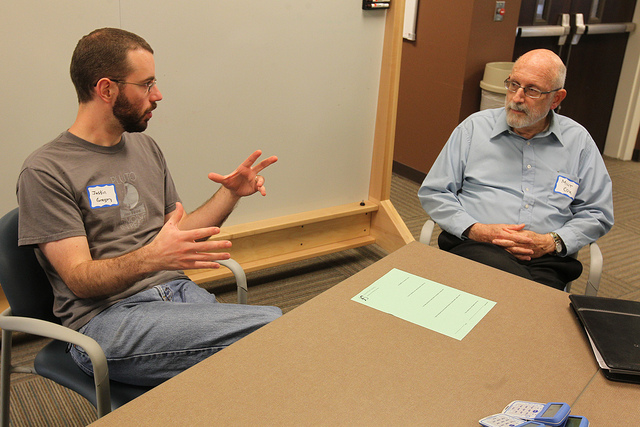I’m assisting our 4th grade teachers in finding resources for their upcoming unit on division, and I’m hoping to avoid either of these situations from arising (see the videos below). Actually, these videos could be great hooks to see if students can figure out what mistakes the people in them are making…
A key problem in both of these videos is that these (fictional) people are making key mistakes in their use of a standard algorithm which they clearly do not understand, nor do they seem able judge how accurate their solutions are. Now, my suspicion is that students will not make such egregious mistakes, but they may make more subtle mistakes based on the same principles.
The key components of any division instruction should help students by:
- emphasizing understanding what they are doing when they use a division algorithm,
- providing tools for students to estimate their answer,
- encouraging them to use their estimation skills to check the reasonableness of their answer,
- suggesting alternate techniques to double check the accuracy of their answer,
- giving time to see the connection between different division algorithms,
- embedding the use of division in a problem solving context.
If I were going to teach division, (after confirming that students understand multiplication very well) I might start with a problem about equal sharing for students to do that every student can access. Next I might gradually increase the size of the numbers in the problem until students start to see that their "naive" strategies may work, but are very inefficient. One obvious problem I can foresee happening here is that some of the students in many grade four classrooms already know a division algorithm, and may be reluctant to come up with their own strategies as a result.
Next, I would compare different strategies that students use in a whole group setting. We would spend some class time discussing the strategies and talk about the benefits and drawbacks of each. We might also explore some other alternate strategies not yet shared, perhaps using a gigsaw technique where each group explores a specific strategy, perhaps suggested by a video.
One interesting activity for students might be to watch the videos above and try and figure what mistake the people in the video are making when they calculate.
Here are some division strategies that your students may not have seen before:
- Double division
- Galley division
- Chunking
- Division "by parts" (see the third method for division listed on the page)
I’m also looking for projects and/or puzzles which require the use of division as a strategy for solving the problem/puzzle.
An aside: I am not convinced that these algorithms have much value for our students. More time spent understanding what exactly what division is would be more useful, I think, for our students in the long run, and then just give them a calculator. However, that is not my decision to make, it is up to the BC Ministry of Education to decide.
